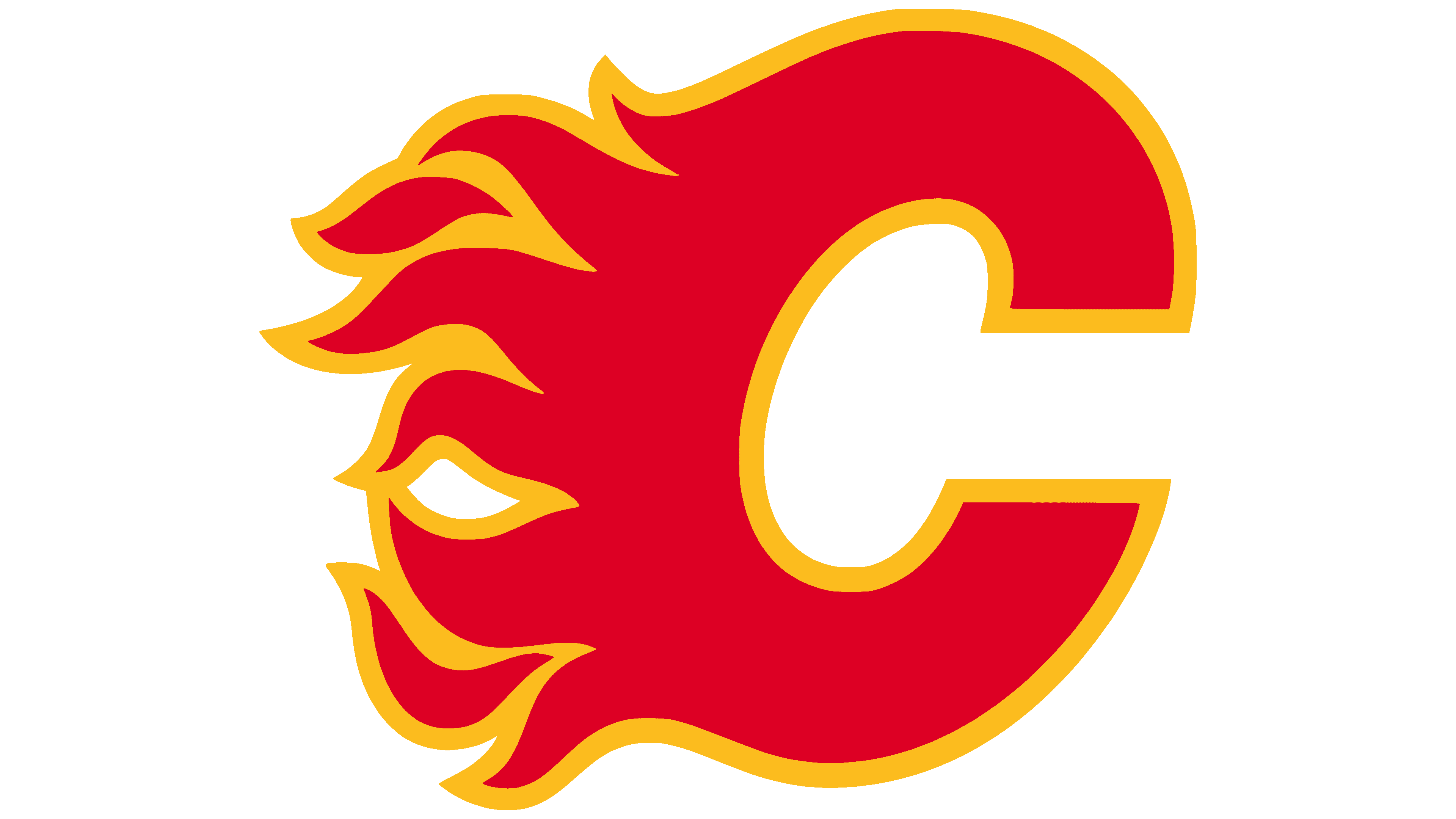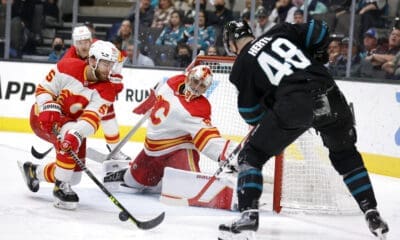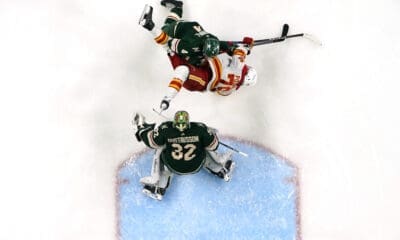Calgary Flames
Sven Baertschi, Markus Granlund, reality and expectations
Both were selected in the 2011 draft. Baertschi had a relatively poor season. Granlund had a fantastic one.

Sven Baertschi entered the 2013-14 season as a known commodity. He spent his junior career in the WHL and had a five game emergency recall stint, during which he scored three goals. He played for Abbotsford during the lockout, started for the Flames when the NHL resumed, scored one point, was sent down, was brought back up when all the veterans were traded away, and finished the year scoring nine points in seven games.
So, going into this season, there was some level of expectation for the 21-year-old.
Markus Granlund, however, was relatively unknown. He’d attended a few prospect camps and played for Finland in the World Juniors, but otherwise, he spent all his time playing for HIFK Helsinki in the SM-liiga. Baertschi was entering his fourth North American season; for Granlund, this was his first.
Granlund had an impressive training camp, but was ultimately sent down. Baertschi made the Flames and, when paired with Sean Monahan, was off to a pretty good start, despite quotes from the upper offices about mulligans and playing in three zones.
Baertschi's struggles
After the initial hype of the season wore off, the Flames went on a road trip and fell into a four-game losing streak. Baertschi was the one who suffered Hartley's wrath, becoming a healthy scratch for the next game (which they lost 5-1). From that moment on Baertschi seemed to be in and out of the doghouse, until finally, when Jay Feaster was fired, Brian Burke sent Baertschi down to Abbotsford. He'd collected two goals and 11 points in 26 games with the Flames, and never came back up.
(For the record, for all the organization's love of Monahan, it should be noted that in Baertschi's first 50 NHL games, he had 23 points. In Monahan's, he had 24. In their admittedly young careers, Baertschi is a .47 PPG player in the NHL, while Monahan is at .45 PPG.)
Baertschi had a difficult time scoring in the AHL. It took him five games to score his first point, and he was relatively streaky; although, he was still getting plenty of shots on net. He did find the occasional hot streak, including four goals and 10 points in the second last week of the season. But for the most part, not a lot went right for the young forward this year. He finished with 29 points in 41 games for the Heat: .71 PPG.
Granlund's emergence
Granlund, however, got his first recall around Christmas time. The Flames weren’t sure whether Mikael Backlund was going to be able to play, so Granlund, coming off a goal from the night before, was called up. Backlund was fine, and Granlund spent two games as a healthy scratch in the NHL before being sent back down.
Then, over the course of the Olympic break, Granlund scored two goals and seven points over six games. He was called back up to the Flames after the break, where he looked in-place, scoring two goals – including a shorty – and three points in six games, before suffering a premature injury to Jarret Stoll 12 seconds into his seventh NHL game.
He returned to the Heat at the end of the season, and finished his first AHL year with 46 points in 52 games: .88 PPG.
The AHL playoffs
With a playoff spot locked up and lots of black aces on the way, Baertschi sat out the final two games of the Heat's season, while Granlund played two of the final three.
And then Granlund dominated – well, as much as someone on a team that lost a series 3-1 can.
Granlund scored two goals (including the lone game winner), five points, and had 17 shots on net as he led the Heat. Baertschi, meanwhile, only managed one assist in the first game, and had a total of nine shots throughout the series.
Contextual expectations and realities
Overall, Granlund undeniably had the better season between the two. In his first North American season, he scored more than his European counterpart, and by ending the season particularly strongly, he's in the spotlight now – and deservedly so.
For Baertschi, this season counts as a disappointment. It would have been better to see him in the NHL for a full year, and when that didn't happen, his AHL numbers weren't exactly impressive. When several Flames players got hurt, he was not among the many prospects to be recalled. It seems as though he has now been overshadowed by his 5'11" sub-200 lbs. offensively skilled forward prospect counterpart.
But ultimately, he's not that far behind, and you can't put too much stock into one year.
In his AHL stint, Baertschi averaged about 2.1 shots per game with a 14.9 SH%. Granlund averaged 2.6 shots per game with a 18.4 SH%. Both players were among the Heat's most frequent and accurate shooters.
In fact, the Heat’s most frequent shooters were all guys who spent some time in the NHL this season: Blair Jones, Ben Street, and Derek Smith led the way with 3.2, 3.0, and 2.8 shots per game in the AHL, respectively. Then Granlund, then Max Reinhart at 2.5, and then Baertschi – and this is with Baertschi having a subpar season.
In short? This was one season, and not a particularly great one for Baertschi. It was a great one for Granlund, and while he fared better, it wasn't necessarily by a whole lot. Baertschi may have garnered overhyped initial expectations, but the reality of things is he's still one of the Flames' best prospects. Granlund, meanwhile, came into this season relatively unknown, and impressed.
So maybe Feaster was right when he made the "mulligan" comment. Not having Baertschi play on emergency recall probably wouldn't have affected his development, but in context, it would make his season appear less disastrous and resemble more what it was: just one year for a work-in-progress prospect with a lot of potential.
Much like Granlund.
by Ari Yanover









